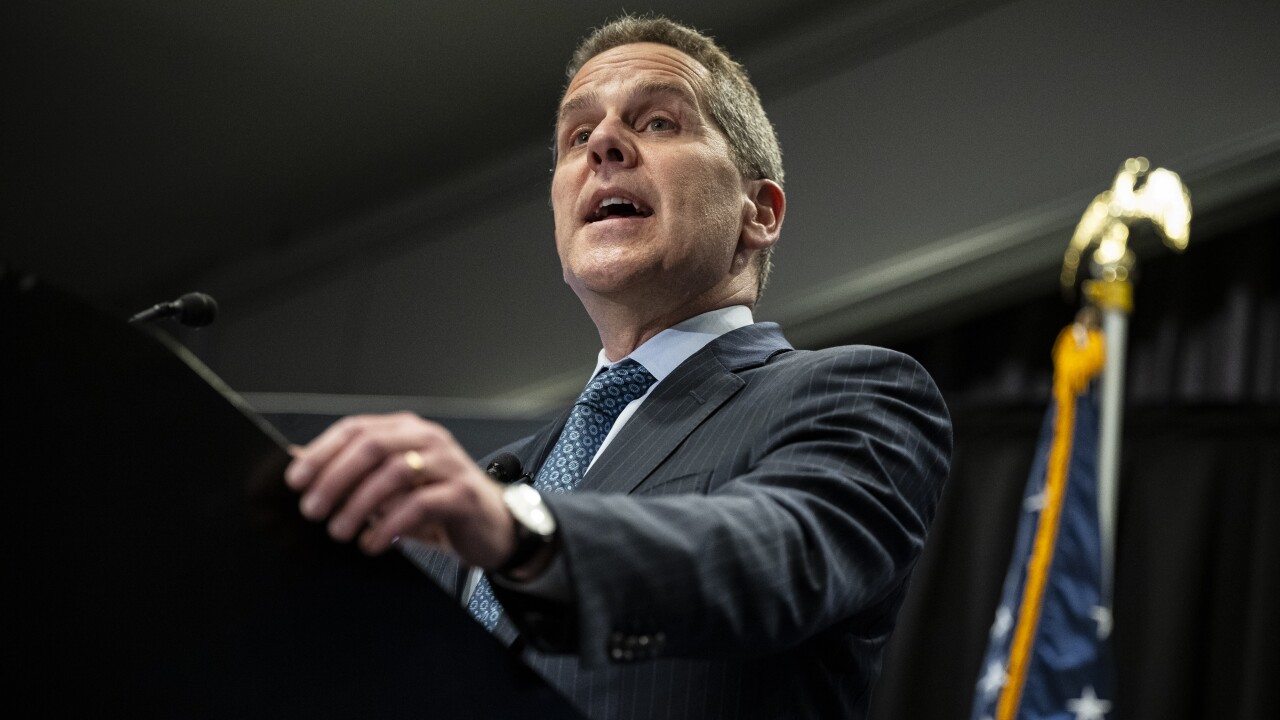As New York's open-loop transit payments upgrade nears completion, the project's leadership is considering how to promote it for commerce.
Transit systems are common testing grounds for new payment systems, since they require fast and secure validation at turnstiles and also feed riders into a network of merchants both within the system and above ground. The transition from closed-loop systems, like the stored-value Metrocard, to open-loop systems, like the new OMNY, creates a foundation for many other services to be built on top after the rider has enrolled.
"Once we have
As office workers grapple with the ongoing effects of the pandemic, they expect contactless options that can be embedded in a mobile app or digital wallet to support everything they need on their commute.
In new research, Visa reports 88% of commuters expect their transit systems to offer contactless payments, with 53% having a "strong expectation." The card brand, which surveyed 9,000 adults in nine countries, also reports 84% of transit riders who decreased usage during the pandemic expect to use transit as often as they did before the pandemic.

"Being able to travel with a contactless card or device that you already own, with the confidence that you will be charged the correct fare, which contactless allows, is a key tool in public transport supporting the economic recovery of cities following the pandemic,” Tuckett said.
In New York, the OMNY hardware deployment finished in September 2020, with a quick uptake. Usage of OMNY is up 260% on subways and 318% on buses since the beginning of 2021. OMNY payments were 17.4% of overall transit trips in June, up from 12% in March. More than 35 million contactless payments have been made with bank cards issued in 137 countries in New York, showing a diverse range of payment activities.
OMNY supports all contactless payment methods, including contactless cards and mobile wallets such as Apple Pay. That opens the potential for tie-ins with nearby merchants and for incentive marketing based on OMNY usage, or usage of specific mobile wallets within the New York system.
The MTA will not add incentive marketing in the near-term, but will ramp up its strategy when the legacy Metrocards are discontinued in 2023. "For right now, we're still focusing on delivering the project and getting it out there," Lydon said. "We don't want to offer something on the OMNY side of the house that the Metrocard riders can't use."
OMNY covers subways, buses, Long Island Railroad and Metro North Commuter trains, and Lydon said the MTA is in discussions with other transit systems to support OMNY without identifying specific systems elsewhere in New York or New Jersey. The Port Authority commuter trains (PATH) and New Jersey Transit trains and buses do not accept OMNY.
OMNY's deployment on Long Island Railroad and Metro North trains is expected to be complete in 2022.
Following extensive shutdowns in the early stages of the pandemic, there has been a slow recovery in transit usage. In New York,
Contactless payments have grown partly due to concerns over spreading the coronavirus through physical contact, and have since become a primary way for payment companies to acquire new merchants and consumers. A similar trend has played out in transit, where safety is giving way to convenience.
"We saw adoption of contactless go up like a hockey-stick curve during the pandemic, but there are benefits for transit systems that go beyond safety, like speed and cost benefits," said Jason Blackhurst, senior vice president of innovation and strategic partnerships at Visa, estimating transit systems reduce overhead costs by about 35% by avoiding operating their own closed loop currency.
Visa has introduced open-loop contactless payment technology in more than 450 locations, with more than 700 projects in the pipeline. The projects are designed to accommodate any mobile wallet or contactless card.
The next phase of projects will deepen ties between transit and other transportation related payments, such as parking, scooter or other rentals. Visa is hoping to use open-loop transit or parking payments to link several different transactions to the same user experience.
"Our goal is to solve for the complete journey. You show up, tap to pay to park and go from there. Or tap to pay for a train after parking at the station," Blackhurst said.
Mastercard reports 70% of consumers anticipate using a contactless card this year, with more than 100 markets reporting at least a 50% increase in contactless payments over the past year, according to the card brand's
In the U.S., a relatively late country in adopting contactless payments, such transactions have jumped more than 300% in the past year, according to Mastercard, which like Visa is trying to tie transit payments to a broader set of transactions via the frequency of transit usage.
Mastercard's open-loop transit deployments include New York, Miami, London and Chicago.
"The speed reinforces what consumers want when they leave a metro station and go to a store," Aikat said.
The lockdowns that began last year allowed some transit modernization projects to advance faster as systems were operating on shortened schedules, according to Visa's Blackhurst, adding an additional boost could come from the pending infrastructure bill in Congress. The
The transit funding could additionally help smaller communities adopt contactless payments and other technology for their transit networks ahead of demand from new riders, Blackhurst said. "A lot of these smaller communities don't have the ridership to offset the cost and the ROI for the projects," Blackhurst said.
In a statement, the MTA said the bill would help fund overall system modernization and contribute to non-payment related projects such as the Second Avenue Subway and commuter rail expansion.





